We’ve been having a much-welcomed break from the rain for nearly a week now. I’ve been out birding almost every day except for New Years. These shots were taken on the 29th down the street from my house on Ruston Way. I’m not unaware of the irony that all the birds pictured here are black and white, birds that really don’t benefit from sunshine as much as birds with more colorful plumages.
Still, this Surf Scoter’s colorful bill certainly appears more striking in the sunshine,
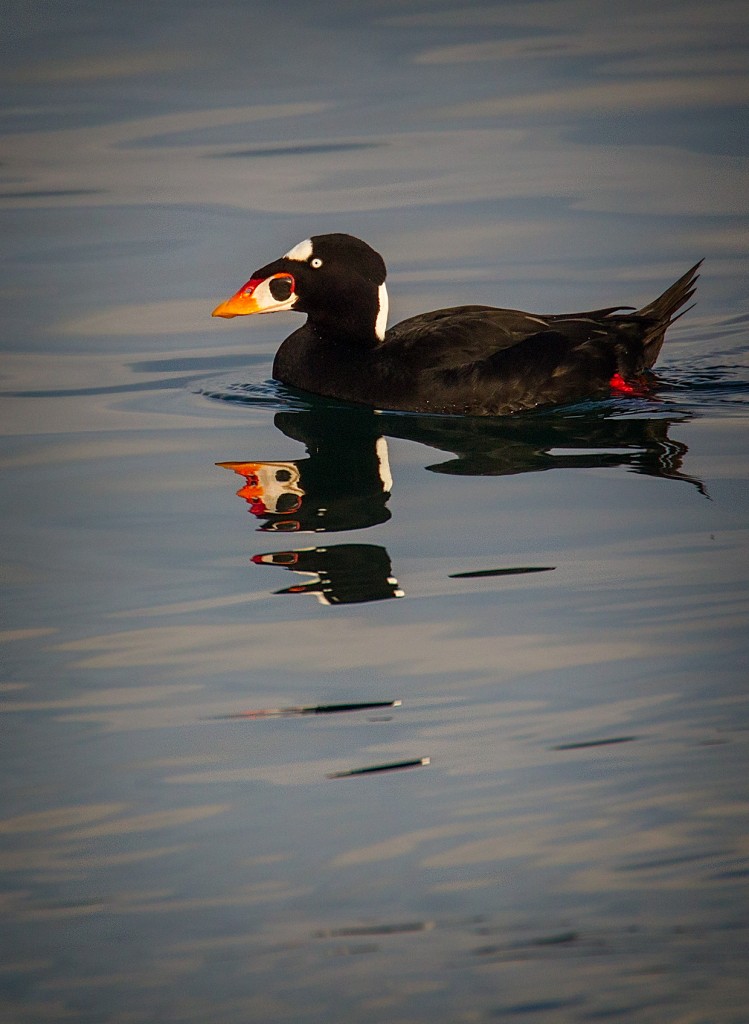
and you’re not going to get those beautiful reflections with overcast skies.
Although Barrow’s Goldeneye seem more photographic than the Common Goldeneye, I’ve been focusing on the Common lately since they seem to be getting rarer and rarer. It’s easy to forget that their head has a green tinge to it, especially when I seldom see it in sunshine.
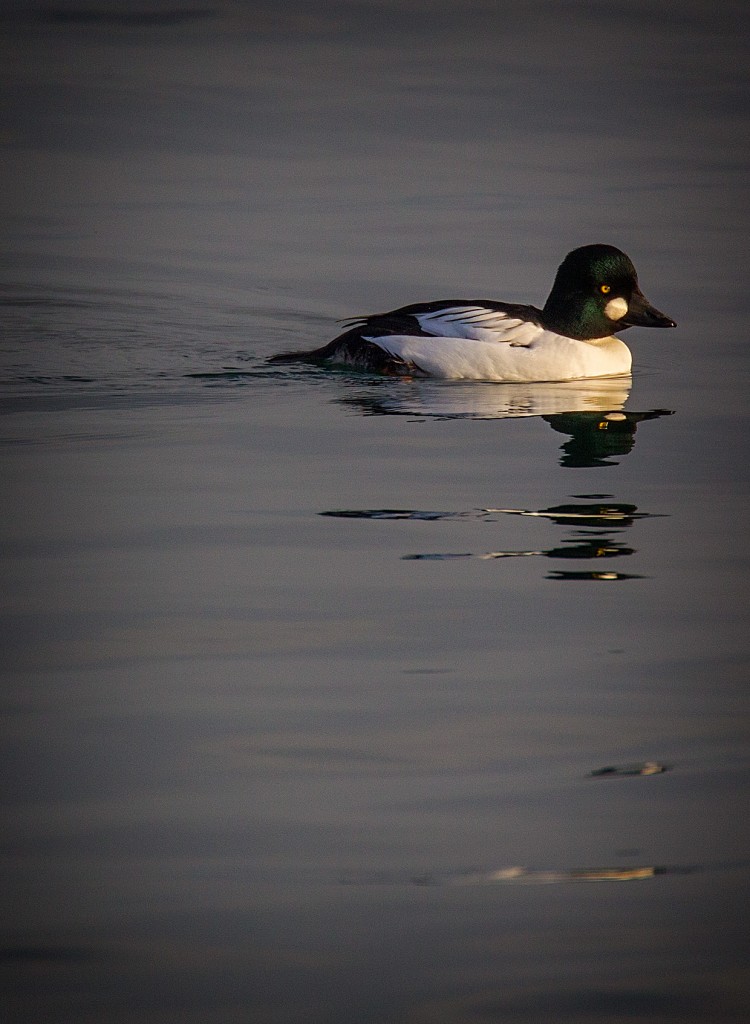
Like most Goldeneye, they don’t seem to do much other than float around, and dive, so it’s a photographic treat when you can catch them doing something more than just floating.
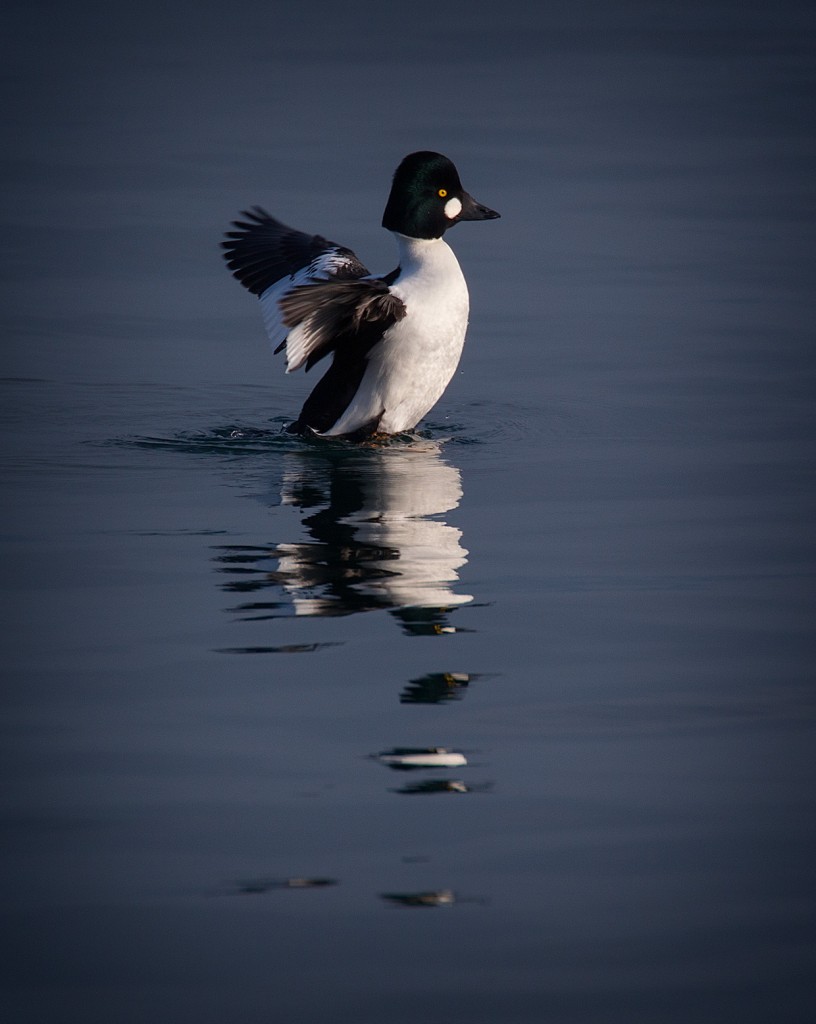
The reflection was a nice bonus.
I caught this Goldeneye feeding on a small Crab.
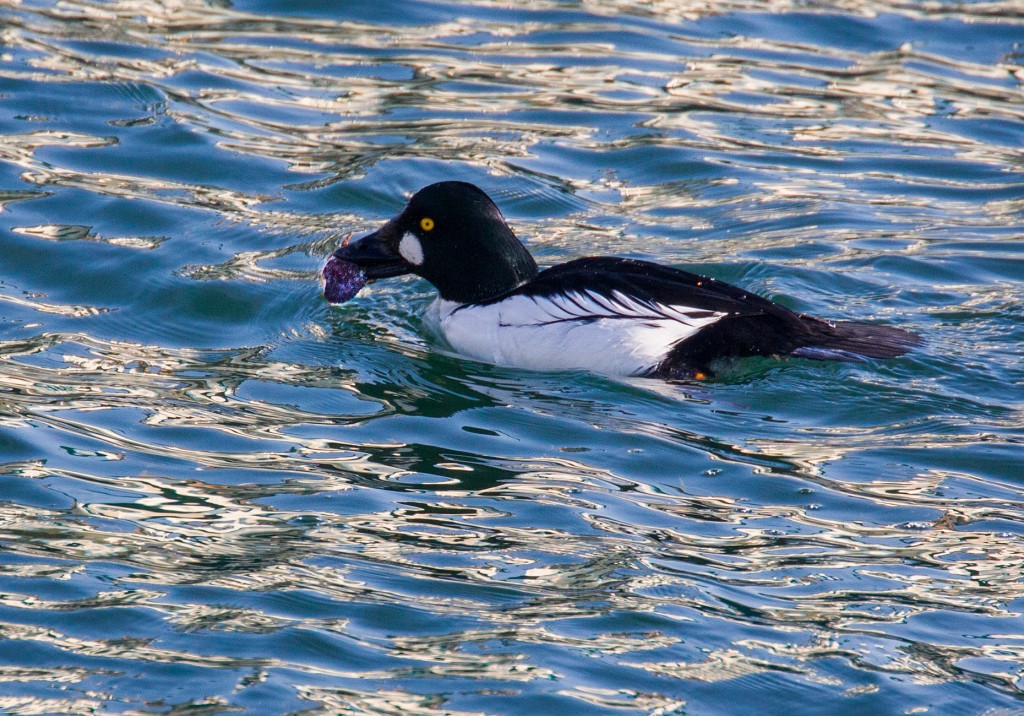
Even this Male Bufflehead was more striking with a little sunshine on his head.
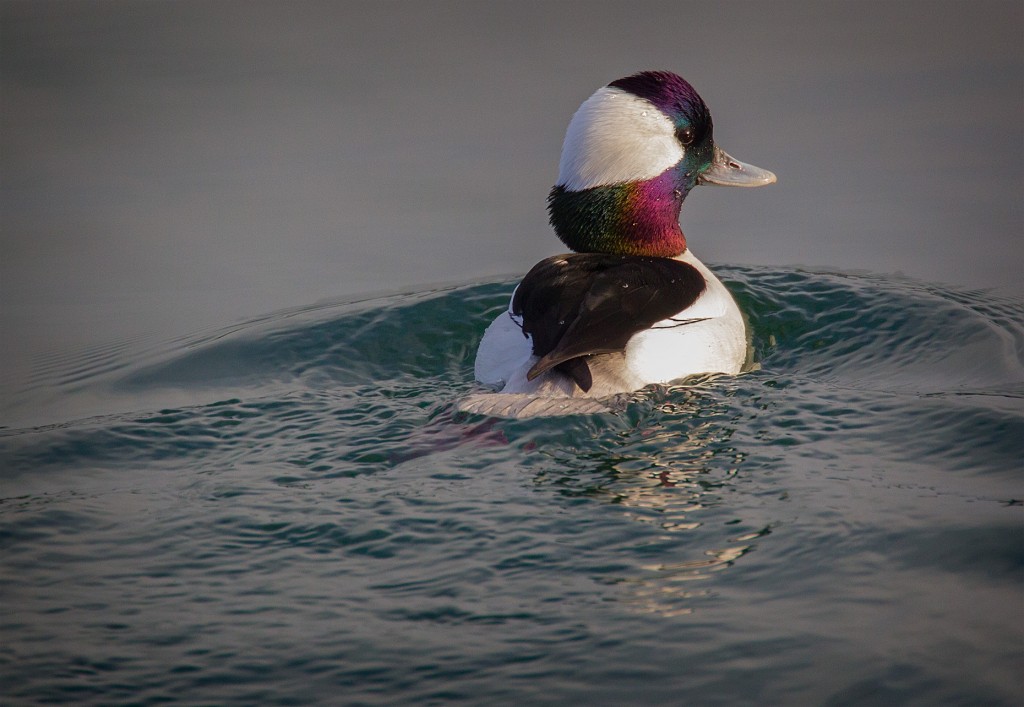
Finally, I’ve seen this odd little fellow several times, and still can’t figure out what it is.
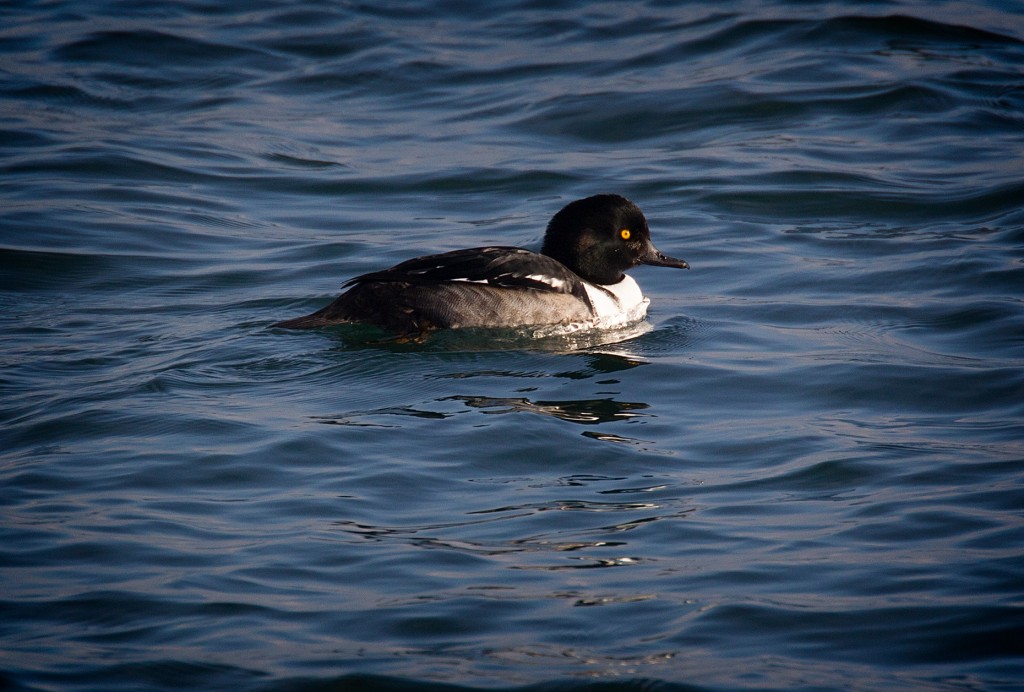
The eye would certainly suggest Goldeneye, but the plumage and, especially, the bill suggest that it is a merganser. Apparently there are Goldeneye-Merganser hybrids, but I don’t think I’ve ever seen one before. IDing birds is anything but simple, which might be one reason it continues to appeal to me.






